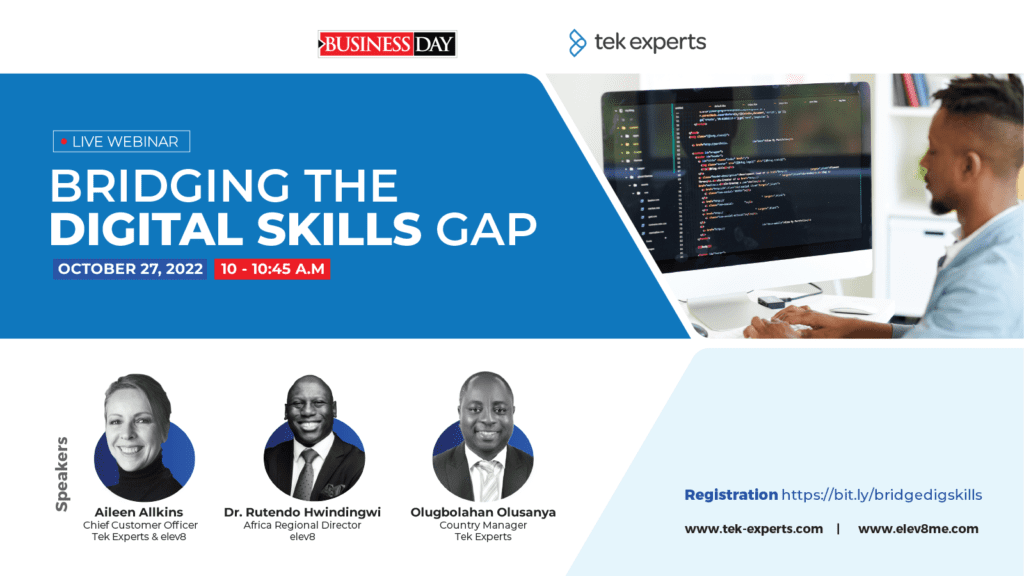As organizations continue to invest in their workforce to stay ahead in today’s evolving digital economy, talent development is a critical area that requires continuous attention. Businesses can improve overall performance and increase productivity by upskilling and reskilling employees. 64% of learning and development professionals emphasize that prioritizing reskilling their existing workforce to address skills gaps has become more crucial.
This article will discuss the importance of talent development strategies for digital upskilling and reskilling success.
How Talent Development Improves Overall Business Performance
Effective talent development programs not only enhance employee skills but also contribute to aligning business strategy with talent management initiatives. Developing new skills among employees is crucial for overall business performance, bridging skill gaps, and meeting organizational goals. As an ongoing process, talent development is vital in nurturing top talent, ensuring that the right people are equipped with the necessary skills through professional development and programs. Talent strategy is essential for future-proofing the workforce and maintaining a continuous learning culture.
Assessing Current Skills Gaps in Your Workforce
Assessing the existing skill gaps within your workforce is the initial step in talent development and is vital for effective talent management and succession planning. Understanding and addressing these skill gaps ensures that the right people are in leadership roles, contributing to the overall professional development of the organization. Recognizing and rectifying these gaps is necessary for employee engagement retention and fostering a continuous learning culture. This assessment also plays a crucial role in aligning talent strategy with business goals and identifying the skills needed for growth and success.
Recognizing Opportunities for Upskilling and Reskilling
Recognizing opportunities for upskilling and reskilling enhances individual career goals, aligning with employee development and talent management strategies. This contributes to talent development and company culture by enhancing development plans through professional development and leadership programs. It ensures that the right people with the necessary skills are in leadership roles. Identifying these opportunities also involves recognizing the importance of soft skills and the need for formal training to meet the aspirations of talented individuals within the organization and attract top talent.
Importance of Understanding Employee Needs and Aspirations
Understanding the needs and aspirations of employees is paramount in talent development. Acknowledging and tailoring development programs to align with these needs fosters employee experience and enhances talent management initiatives. This understanding is crucial for talent managers as it ensures that employee needs and aspirations align with talent development efforts. By aligning employee aspirations with talent strategies, organizations can provide the professional development of their top talent and new hires, leading to a more skilled and motivated workforce.
Implementing Effective Digital Skilling Strategies
Tailoring programs to align with organizational and employee requirements is vital to effective digital skilling. Real-world scenarios should be integrated into training to provide practical learning experiences, supporting digital upskilling efforts. Effective digital skilling strategies contribute to talent development and foster employee growth. Understanding the needs and aspirations of employees is pivotal for talent managers, ensuring that the right people are equipped with the necessary skills through a professional development program.
Build a Continuous Learning Culture
This approach enhances development plans and aligns talent strategies with the company’s culture, ensuring that professional development meets the necessary skills of the workforce. Encouraging a continuous learning culture also facilitates ongoing skill development and leadership training. By incorporating best practices, the HR department and team leaders can effectively customize training programs to meet the needs of the team members, nurturing top talent within the organization.
Customize Programs to Meet Organizational and Employee Needs
Talent development efforts are enhanced by tailoring programs to align with organizational and employee needs. Adapting programs ensures they align with broader business strategies, fostering higher employee engagement and satisfaction levels. Meeting the unique requirements of employees and the organization is crucial for the success of talent development initiatives. Customizing programs to meet organizational and employee requirements supports talent development, improves talent management, and creates a more engaged workforce, which is essential for overall business performance. This approach also facilitates the development of a continuous learning culture within the organization.
Integrating Real-World Scenarios for Practical Learning Experiences
Integrating real-life situations into training provides valuable materials for talent development, aligning with business strategy. Practical learning experiences support career path planning and the growth of talented individuals, aiding in onboarding new hires. These scenarios contribute to professional development, ensuring that the right people are equipped with the necessary skills and soft skills through formal training. By incorporating such real-world scenarios, the HR department can effectively implement a talent strategy to meet the needs of team members and assess their progress accurately.
Navigating Challenges in Talent Development
Navigating these obstacles ensures ongoing development opportunities and supports organizational goals. Overcoming these challenges is necessary for employee retention, ensuring the right people are equipped with the required skills through professional development. This aligns with talent strategy and enhances leadership development, benefiting the organization.
Acknowledging Common Challenges in Implementation
Identifying the prevalent obstacles in talent development is vital for HR leaders to ensure the professional development of top talent. Recognizing these challenges is crucial for maintaining a skilled and motivated workforce. Addressing common challenges supports ongoing talent development and plays a significant role in employee retention. Understanding and overcoming these hurdles in talent strategy implementation fosters leadership development and skills acquisition. This approach is essential for nurturing a continuous learning culture within organizations and maximizing the potential of talented individuals.
Providing Practical Solutions and Best Practices
In cultivating top talent, organizations must facilitate practical, hands-on training opportunities to nurture the right people. Professional development best practices guide talented individuals through upskilling and reskilling, ensuring they can apply new skills effectively in their roles. This approach integrates real-world scenarios, balancing upskilling with day-to-day responsibilities and fostering a continuous learning culture. By customizing programs to meet employee needs and organizational goals, human resources leaders can effectively address common challenges in implementation, thus supporting ongoing talent development efforts.
Balancing Upskilling Efforts with Day-to-Day Responsibilities
Balancing the demands of upskilling with employees’ daily responsibilities is critical for fostering engagement and growth. It is essential for individuals to effectively manage their time and workload, allowing them to integrate ongoing learning into their day-to-day tasks. Finding this equilibrium is critical to success, ensuring professional development becomes a seamless part of their routine. Such an approach supports the continuous growth of top talent within the organization, contributing to the talent strategy’s effectiveness and the success of the human resources department.
Measuring and Evaluating Progress
In talent development, measuring progress is vital for tracking the effectiveness of upskilling initiatives. It provides valuable insights into skill development gaps and enables organizations to gauge the impact of their efforts. Tracking progress allows tailored support for individual employees’ needs; ongoing evaluation is essential for refining talent development programs. This approach ensures that organizations can continuously adapt their talent strategies to meet the evolving demands of the business landscape. Measuring and evaluating progress is integral to professional development and leadership development within the human resources department.
Tracking Employee Progress and Gathering Feedback
Tracking team members’ progress involves monitoring their skill development and learning milestones. This allows for personalized development plans and targeted resources to be tailored to the necessary skills of each individual. Gathering employee feedback is crucial for identifying areas for improvement in talent development programs and ensuring that the right people are receiving the support they need. Regularly tracking employee progress and collecting feedback is essential for assessing the effectiveness of training initiatives, refining the talent strategy, and continuously enhancing professional development opportunities.
Assessing the Overall Impact of Upskilling
Assessing the overall impact of upskilling involves evaluating skill gaps within the organization and aligning upskilling initiatives with strategic goals. It is crucial to consider the broader impact of upskilling on employee retention and career growth, guiding talent managers in refining development plans and making informed decisions. Understanding the effects of upskilling also helps tailor talent development programs to meet individual needs and organizational requirements. By assessing the impact comprehensively, organizations can ensure that their talent development strategies align with the digital landscape’s evolving demands.
Future-Proofing Your Workforce
Identifying emerging skill sets and development needs is crucial for future-proofing your workforce. Proactively anticipating future skill requirements keeps organizations ahead in the digital landscape. Creating development programs aligned with future business strategy is essential for staying competitive. Prioritizing continuous learning and ongoing skill development ensures that the right people are equipped with the necessary skills to thrive. Organizations must recognize the importance of professional development and continuously adapt their talent strategy to meet the evolving demands of the digital economy.
The Digital Skilling Advantage
Ultimately, future-proofing your workforce is critical to staying competitive in the digital age. Talent development is crucial for the success of digital upskilling and reskilling initiatives. Elev8 has a proven record of developing digital skilling solutions for organizations of varied sizes. If you want to upskill or reskill your workforce to boost your organization’s talent pipeline, do not hesitate to contact our team of experts.




